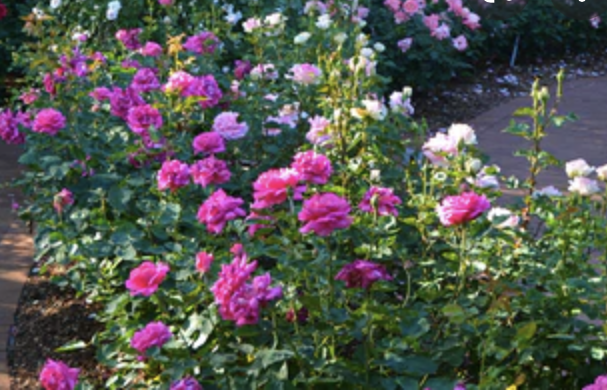
We appreciate the annuals and beautiful trees in our neighborhood, however, our neighborhood has had quite a history of Master Gardeners and flower gardens. Craddock Park was known in the 1930’s for the massive rose garden that was maintained by the Women’s Garden Club. The rose garden would get 1000’s of visitors a year. Unfortunately, there was an outbreak of crown gall infection in 1942, and all of the roses were destroyed.
In 1952, The Woman’s Gardeners Club, with approval from the Park Board, debuted the nation’s very first Scent Garden in Craddock Park for the blind with braille nameplates. The garden was in the southeast end of the park.

In 1939, when Ernest Harrington and his wife bought their home at 4439 Rawlins, they extensively changed the landscaping to the gardens they appreciated in Arizona and New Mexico. They had yuccas, magueys, aloes, and cacti transported into their front and backyard. The state of Arizona had to give them their approval to remove giant saguaros and move them out of state into their Dallas home.


Major Edward A. Wood of 4321 Rawlins was a Dallas city plan engineer and a master gardener. He was president of the First Men’s Garden Club for years and had a particular affection for Dahlias.





In the early 1950s, there was an escalation of gardeners on the 4300 Block of Vandelia. Three ladies, who were all active Garden Club members wowed the neighborhood and newspapers readers with their gorgeous gardens trying to outdo each other with their skills.
Mrs. C.M. Thompson was known for her beautiful rose garden of 60 bushes in the front of her home, her favorite rose called the Fashion rose. Mrs. Thompson was also an expert on African Violets.
Mrs. Wray of 4318 Vandelia loved planting blooming perennials such as wild sasparilla vine, clematis, gardenias, and strawberries. She used peanut hulls, sheep manure, and ground cottonseed to protect and grow her amazing garden.
For Mrs. J. A. Brooks, gardens are for attracting birds. Her garden had two birdbaths and a feeding station set among flowers to attract various species. She grew coral honeysuckle, beds of irises, day and ginger lilies, and tuberose. She also brought plants and cutting from her family home in Tennessee such as english ivy, syringa, camellias, clove pinks, sedums, and phlox.



I know we all enjoy walking our neighborhood and appreciating colorful beds of flowers and shrubs. Thank you to the past and present residents who work tirelessly to make our neighborhood the beautiful garden it is.
